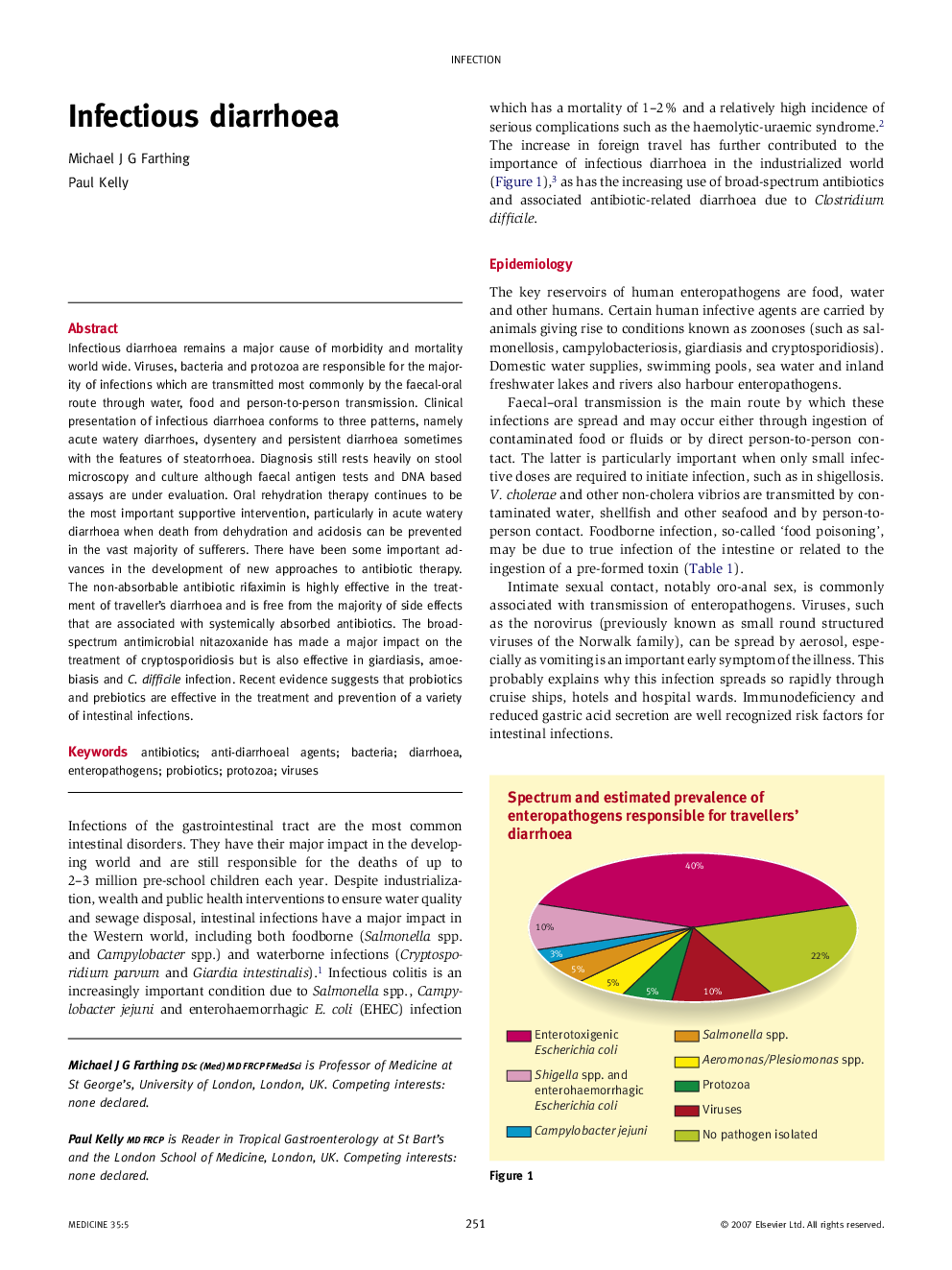| Article ID | Journal | Published Year | Pages | File Type |
|---|---|---|---|---|
| 3807979 | Medicine | 2007 | 6 Pages |
Infectious diarrhoea remains a major cause of morbidity and mortality world wide. Viruses, bacteria and protozoa are responsible for the majority of infections which are transmitted most commonly by the faecal-oral route through water, food and person-to-person transmission. Clinical presentation of infectious diarrhoea conforms to three patterns, namely acute watery diarrhoes, dysentery and persistent diarrhoea sometimes with the features of steatorrhoea. Diagnosis still rests heavily on stool microscopy and culture although faecal antigen tests and DNA based assays are under evaluation. Oral rehydration therapy continues to be the most important supportive intervention, particularly in acute watery diarrhoea when death from dehydration and acidosis can be prevented in the vast majority of sufferers. There have been some important advances in the development of new approaches to antibiotic therapy. The non-absorbable antibiotic rifaximin is highly effective in the treatment of traveller’s diarrhoea and is free from the majority of side effects that are associated with systemically absorbed antibiotics. The broad-spectrum antimicrobial nitazoxanide has made a major impact on the treatment of cryptosporidiosis but is also effective in giardiasis, amoebiasis and C. difficile infection. Recent evidence suggests that probiotics and prebiotics are effective in the treatment and prevention of a variety of intestinal infections.
